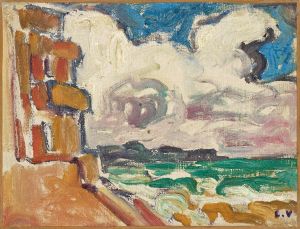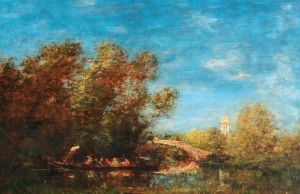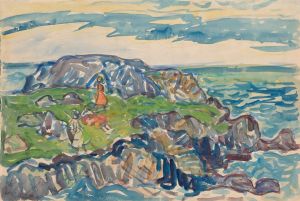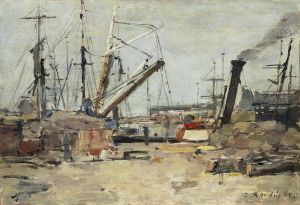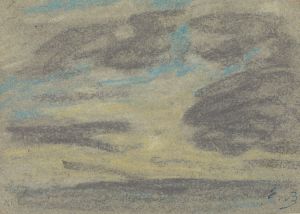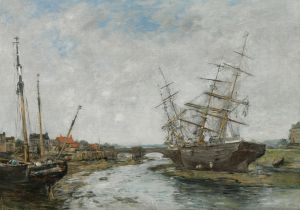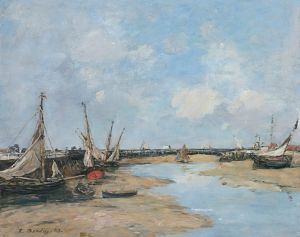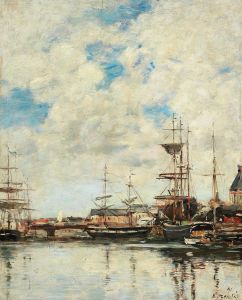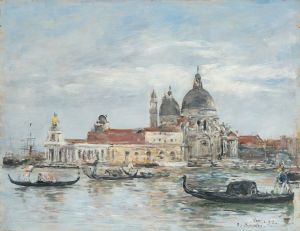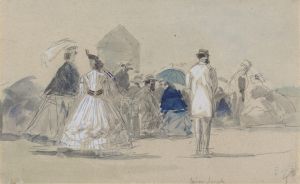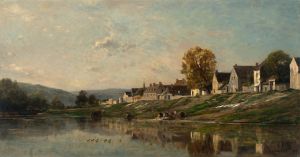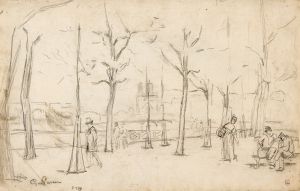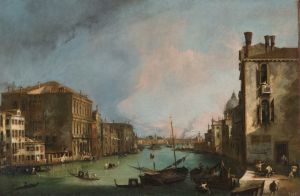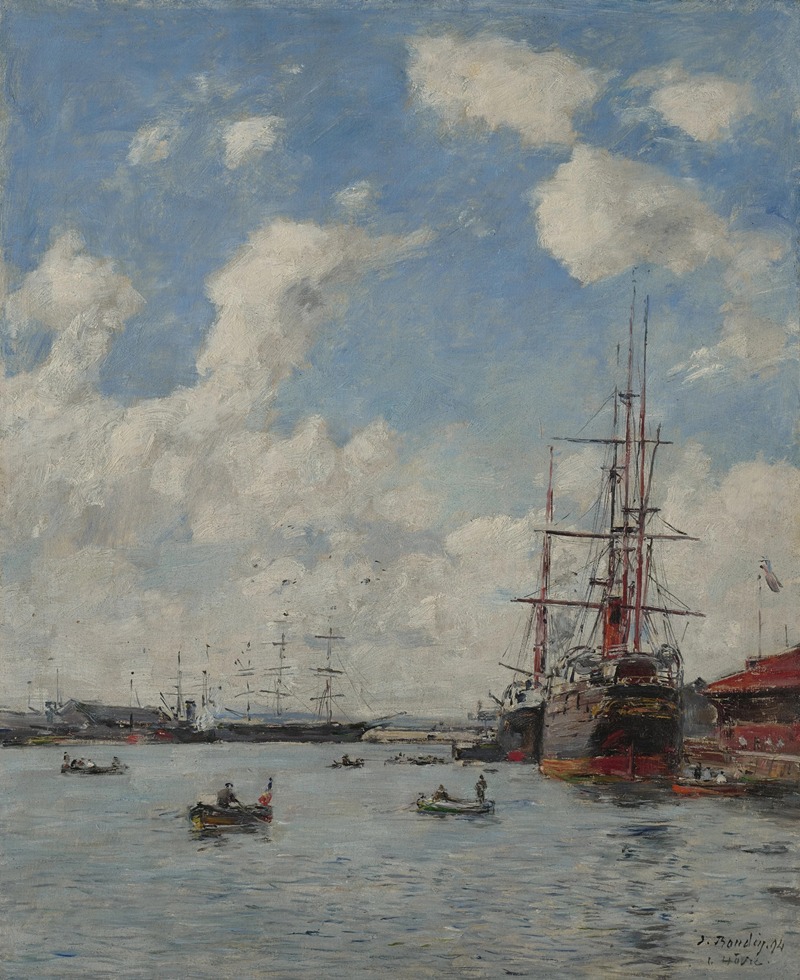
Le Havre, le bassin de l’Eure
A hand-painted replica of Eugène Boudin’s masterpiece Le Havre, le bassin de l’Eure, meticulously crafted by professional artists to capture the true essence of the original. Each piece is created with museum-quality canvas and rare mineral pigments, carefully painted by experienced artists with delicate brushstrokes and rich, layered colors to perfectly recreate the texture of the original artwork. Unlike machine-printed reproductions, this hand-painted version brings the painting to life, infused with the artist’s emotions and skill in every stroke. Whether for personal collection or home decoration, it instantly elevates the artistic atmosphere of any space.
"Le Havre, le bassin de l’Eure" is a painting by the French artist Eugène Boudin, who is renowned for his seascapes and beach scenes. Boudin was born on July 12, 1824, in Honfleur, France, and he is often considered one of the precursors to the Impressionist movement. His works are characterized by their vivid portrayal of light and atmosphere, often capturing the transient effects of weather and time of day.
The painting "Le Havre, le bassin de l’Eure" depicts the port of Le Havre, a significant maritime city in the Normandy region of France. The specific area shown in the painting, the Bassin de l’Eure, is one of the docks in the port, which was an important hub for trade and commerce during the 19th century. Boudin had a particular affinity for maritime subjects, and his works frequently feature the bustling activity of ports and the serene beauty of coastal landscapes.
In this painting, Boudin captures the essence of the port with his characteristic loose brushwork and keen attention to the effects of light on water. The composition likely includes ships, dockworkers, and the various elements that make up the daily life of a busy port. Boudin's ability to convey the atmosphere of a scene is evident in the way he handles the reflections on the water and the interplay of light and shadow.
Boudin's work was highly influential in the development of Impressionism. He was a mentor to Claude Monet, who later became one of the leading figures of the movement. Boudin's emphasis on painting en plein air (outdoors) and his focus on capturing the fleeting moments of nature were techniques that Monet and other Impressionists would adopt and expand upon.
"Le Havre, le bassin de l’Eure" is a testament to Boudin's skill in portraying the maritime environment and his deep connection to the coastal regions of France. His works are celebrated for their ability to evoke the mood and atmosphere of the scenes they depict, making him a pivotal figure in the transition from traditional landscape painting to the more modern approaches of the late 19th century.
Eugène Boudin continued to paint until his death on August 8, 1898. His legacy lives on through his extensive body of work, which continues to be admired for its beauty and its role in the evolution of modern art. "Le Havre, le bassin de l’Eure" remains an important piece within his oeuvre, exemplifying his mastery of light and his dedication to capturing the essence of the natural world.






